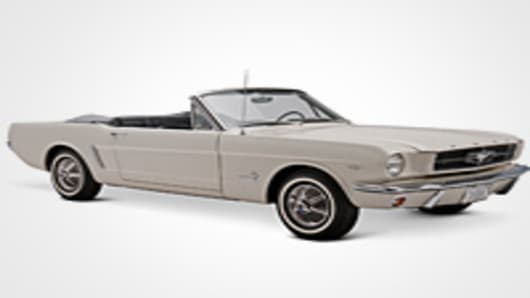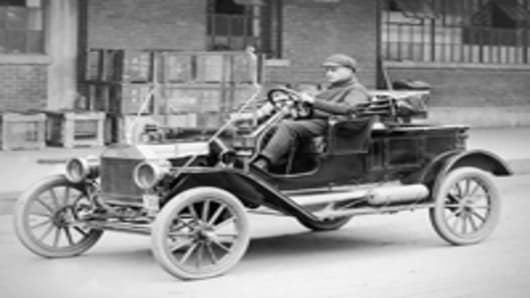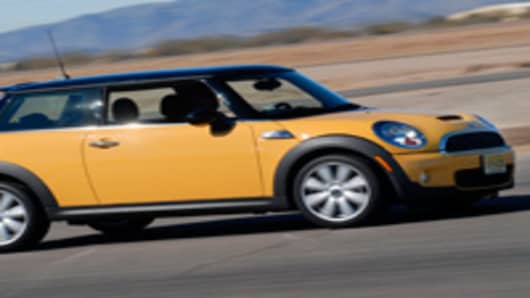What ever happened to America’s cult, classic cars? We’re talkin’ Mustangs. Corvettes. James Dean slumped in a Porsche Spyder. Clark Gable draped in a Duesenberg, the epitome of ‘30s glamour.
During the '70s, car regulations prompted changes in auto design, and the oil shock sentfuel pricessoaring. The automobile transformed from object of leisure and luxury to an appliance of transportation. While American cult cars haven’t been the same since, their appeal lingers.
“Cult cars will always be around. The love affair is always going to be there,” says John Heitmann, auto historian and professor at the University of Dayton. “They may change and become cult electric cars in the next 40 years.”
True Devotion
The cult-car phenomenon has dissipated since its ‘50s heyday. But that hasn’t stopped manufacturers from pushing their models as the next gotta-have-it car. Auto enthusiasts continue to admire and collect cult-car classics.
Just ask Howard Pardee of the Shelby American Automobile Club, based in Sharon, Conn. Pardee and his fellow 3,000 club members from around the globe are fans and collectors of the Shelby Cobras and Mustangs, high performance versions of the iconic Ford Mustang, part of Ford Motor. The cars were manufactured from 1962 through 1970 model years.
“People wanted to have these race cars that they could drive on the street,” Pardee says.
When Pardee laid eyes on his two-door white beauty in White Plains, N.Y., in 1965, “I knew right then and there, this is something I was very interested in.”
He later bought a second Shelby, also white. And so began his life-long affair with the cult Mustang car.
The cult status stretches beyond America's borders.
“Even right now with the lower value of the [American] dollar versus the Australian dollar, a lot of cars are flown to Australia,” says Pardee.
Defining Cult Status
So what separates a mere auto collectible from a bona fide cult superstar?
“One indicator of cult status is what kind of cultural vestiges are left over,” says Heitmann, vice president of the Society of Automotive Historians.
In other words, cult cars go beyond the auto lexicon and seep into the broader American landscape of literature, music, movies and television, says Bob Casey, senior curator of transportation at the Henry Ford Museum in Dearborn, Mich.
“The key," adds Heitmann, "is that intangible kind of design and product and quality that somehow come together, that essentially makes it the object of desire.”
America’s first cult car was likely the Model T Ford in the early 1900s.
“That car really captured America’s imagination and that of the world’s,” says Casey of the Henry Ford Museum.
Model T Ford
More than a century after its debut in 1908, the "Tin Lizzie" still inspires admirers and collectors.
“It’s the car that truly put the world on wheels,” says Jay Klehfoth, chief executive of the Model T Ford Club of America, based in Centerville, Ind.
The first Ts, actually called 1909s, were manufactured in many regions including the U.S., Canada, Mexico, Brazil, Argentina, Europe and Japan.
The Model T Ford Club celebrated its centennial in 2008, when 3,500 people from 50 states and eight countries showed up in Richmond, Ind., with 1,000 Model T Fords.
“We had a whole week of driving back-country roads and had a great time,” Klehfoth says.
The iconic car’s accessibility and affordability lures fans. Collectors can fetch a T for $1,000, with a well restored model available for under $10,000, Klehfoth says. They originally sold for about $850. Ford brought the cost down to about $290 by 1925, roughly $3,700 in today's dollars.
Such staying power has automakers trying to crack the cult-car code. It’s one reason why luxury, sports cars are featured in blockbuster films.
Paramount Pictures’ “The Italian Job” in 2003 prominently featured the BMW Mini amid thieves trying to pull off a heist. It was a remake of the 1969 caper film with Michael Caine.
Cult Status and Good Business
So does a film like “The Italian Job” actually help BMW’s car business?
“The impact is enormous,” says Al Lieberman, executive director of the Entertainment, Media & Technology program at NYU’s Stern School of Business. “What could be better than to see it in that movie? It fits into tight spaces, whips through tunnels. Those things impacted, absolutely, someone who was thinking about buying a small car.”
The film “really helped promote the notion of this speedy little car, and the free spirits who drive it,” adds Heitmann.
It’s this convergence of image and sales that has automakers cultivating icon status. And auto manufacturers today don’t even wait for movies to be developed so they can insert car images. They produce the car-centric films themselves.
That’s what BMW did in 2001 and 2002, when it launched “The Hire,” a series of eight short, online films that teamed alluring, sturdy BMWs with top filmmakers like Ang Lee, exotic locations and attractive actors including Clive Owen and Stellan Skarsgard.
A car’s popularity and cult status — if achieved — can help car model sales, and boost all the brands under a company’s broader portfolio, says Heitmann.
“Corvette pulls up all of Chevrolet,” he says. The Chevy Corvette is owned by General Motors . “When you have an iconic cult car that is under the umbrella of that brand, it can do nothing but help the overall brands,” Heitmann says. “Everything is about the brand.”





